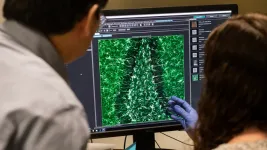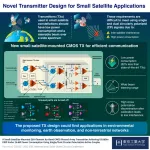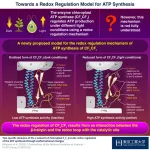(Press-News.org) SAN FRANCISCO, CA—February 21, 2023—Of all the known genetic risk factors for late-onset Alzheimer’s disease, the strongest is a gene for the protein called ApoE4. People with one copy of this gene are 3.5 times more likely, on average, to develop Alzheimer’s than others, and those with two copies face a 12-fold increased risk. However, exactly how ApoE4 boosts the risk of Alzheimer’s remains unclear.
Multiple types of cells in the brain make ApoE4—some of it is produced by neurons, but other brain cells called glia make it in higher quantities. For that reason, most prior research on this protein has focused on ApoE4 from glia.
Now, researchers at Gladstone Institutes are shining a brighter spotlight on ApoE4 produced by neurons. In a study published in the journal Nature Aging, they demonstrate in mice that ApoE4 from neurons plays a much bigger disease-driving role in Alzheimer’s than previously thought.
“This research could be a turning point in the field of ApoE research,” says Gladstone Senior Investigator Yadong Huang, MD, PhD, senior author of the study. “Our findings suggest an opportunity to explore new treatments that would specifically target neuronal ApoE4 to protect against Alzheimer’s disease.”
Deleting ApoE4 in Neurons to Reveal its Role
ApoE4 is actually one of three versions of the ApoE protein, which is found in every person’s body. Most people have the “healthy” version, ApoE3, while about 12 percent have the Alzheimer’s-protective version, ApoE2. But about 25 percent of North Americans have one copy of the gene for ApoE4, and up to 3 percent have two copies.
Most ApoE in our brains is produced by a type of glial cell called astrocytes, and previous research suggested that astrocytic ApoE4 contributes to Alzheimer’s disease. However, evidence from Huang and colleagues has hinted for several years that ApoE4 from neurons may play an even more important part.
“Under normal conditions, neurons don’t make much ApoE at all, but when under stress or in response to injury, they quickly increase production of this protein,” says Huang, who is also director of the Center for Translational Advancement at Gladstone, and professor of neurology and pathology at UC San Francisco (UCSF). “That’s why we are very interested in neuronal ApoE4 under disease conditions.”
To better understand the protein’s role, his team created a mouse model for Alzheimer’s disease in which the mouse ApoE gene was replaced by the human gene for ApoE4 or ApoE3. The mice also carry a unique form of the human tau protein that accumulates in the brain with aging—a hallmark of Alzheimer’s disease. Importantly, in the genetically engineered mice, ApoE production by neurons could be selectively eliminated, while preserving the production of ApoE by other cell types, allowing the scientists to examine exactly how deleting neuronal ApoE4 impacts disease progression in mice that mimic Alzheimer’s disease.
Striking Results of Protection
The scientists found that removing ApoE4 from neurons reduced many brain changes resembling Alzheimer’s disease.
In the models, deleting neuronal ApoE4 reduced the abnormal accumulation of tau by over 80 percent. It also protected against loss of neurons and shrinkage of the hippocampus, a part of the brain crucial for memory formation that degenerates in Alzheimer’s patients.
In addition, deleting neuronal ApoE4 protected against loss of myelin sheaths—insulating layers that shield neurons and help their electrical signals travel faster. It reduced overexcitation of neurons, which often occurs in Alzheimer’s disease, and it decreased the abnormally intense reactions of glial cells—key contributors to degeneration—commonly seen in the disease.
“These extensive reductions in pathology were striking, especially since neuronal ApoE4 only accounts for a small portion of the ApoE produced in the brain,” says Nicole Koutsodendris, PhD, lead author of the study, and former graduate student in Huang’s lab at Gladstone and in the Developmental and Stem Cell Biology program at UCSF.
“Our results strongly suggest that neuronal ApoE4 is critical for the development of Alzheimer’s disease in ApoE4 carriers,” Huang says.
A New Direction for Drug Development
While some medications and other treatments may slow the progression of Alzheimer’s disease or help treat symptoms, no cure exists yet. And patients are in urgent need of solutions.
By establishing a key role of neuronal ApoE4, Huang’s team opens up new possibilities for the treatment of Alzheimer’s disease. For instance, drugs or gene-editing strategies could be developed to block mechanisms responsible for the production of ApoE4 within neurons.
“9/,” says Huang. “They open up exciting new opportunities for the development of better drugs or strategies to treat this devastating disease.”
###
About the Study
The paper “Neuronal APOE4 Removal Protects Against Tau-Mediated Gliosis, Neurodegeneration, and Myelin Deficits” was published in the journal Nature Aging on February 20, 2023.
Other authors on the study include Jessica Blumenfeld, Ayushi Agrawal, Michela Traglia, Brian Grone, Misha Zilberter, Oscar Yip, Antara Rao, Maxine R. Nelson, Yanxia Hao, Reuben Thomas, Seo Yeon Yoon, and Patrick Arriola from Gladstone.
This study was funded in part by the National Institute on Aging (R01AG071697, P01AG073082, R01AG061150, F31AG074672, and F31AG074690).
About Gladstone Institutes
Gladstone Institutes is an independent, nonprofit life science research organization that uses visionary science and technology to overcome disease. Established in 1979, it is located in the epicenter of biomedical and technological innovation, in the Mission Bay neighborhood of San Francisco. Gladstone has created a research model that disrupts how science is done, funds big ideas, and attracts the brightest minds.
END
University Professor Douglas Rhoads has been named a Fellow of the American Association for the Advancement of Science, the world’s largest general scientific society and publisher of the journal Science.
As one of only 20 fellows representing the Section on Agriculture, Food & Renewable Resources, Rhoads was chosen by his peers and colleagues for advancing science and its applications in service to society. The organization elected a total of 505 fellows across 24 scientific sections.
Rhoads is director of the Interdisciplinary ...
Researchers from Oregon Health & Science University and institutions across the country have identified a pill used to treat a common skin disease as an “incredibly promising” treatment for alcohol use disorder.
The study was recently published in the Journal of Clinical Investigation.
On average, the people who received the medication, called apremilast, reduced their alcohol intake by more than half — from five drinks per day to two.
“I’ve never seen anything like that before,” said co-senior author Angela Ozburn, Ph.D., associate professor of behavioral neuroscience in the OHSU School of Medicine and a research biologist ...
The University of Ottawa's Dr. Mamta Gautam is the first awardee of the AFMC Wellness Award, a new national honour that recognizes an individual in Canada who has shown dedication to the promotion and advancement of the wellness of physicians, medical students, and others.
“I am truly humbled and honoured. Promoting physician wellbeing is an area that I have been passionate about for over 30 years. To have the AFMC create an award to recognize contributions in this area lends further credibility to the importance of this topic,” ...
A solar radio burst with a signal pattern, akin to that of a heartbeat, has been pinpointed in the Sun’s atmosphere, according to a new study.
In findings published in the journal Nature Communications, an international team of researchers has reported uncovering the source location of a radio signal coming from within a C-class solar flare more than 5,000 kilometers above the Sun’s surface.
Researchers say the study’s findings could help scientists better understand the physical processes behind the energy release of solar flares — the solar system’s most powerful explosions.
“The ...
Huntsman Cancer Institute at the University of Utah (The U) is pleased to congratulate three of our newest endowed chairs. A chair appointment recognizes excellence, while providing academic distinction and funding for future research. Alana Welm, PhD, received a five-year extension in her current role as Ralph E. and Willia T. Main Presidential Endowed Chair in Cancer Research, Aik Choon Tan, PhD, was named the Jon and Karen Huntsman Presidential Professor in Cancer Research, and Brad Cairns, PhD, was named ...
Today, there are many emerging applications for small satellite constellations, ranging from space-borne networks to environmental monitoring. However, small satellites have special needs when it comes to transmitter (TX) technology. For one, they have stringent limitations on power consumption as they draw energy from solar panels and cannot easily dissipate generated heat. Moreover, small satellites need to communicate with fast-moving targets that can be over a thousand kilometers away. Thus, they require efficient and precise beam steering capabilities to direct most of the transmitted power ...
A database updated in 2022 reported around 4,852 active satellites orbiting the earth. These satellites serve many different purposes in space, from GPS and weather tracking to military reconnaissance and early warning systems. Given the wide array of uses for satellites, especially in low Earth orbit (LEO), researchers are constantly trying to develop better ones. In this regard, small satellites have a lot of potential. They can reduce launch costs and increase the number of satellites in orbit, providing a better network with wider coverage. ...
ATP, the compound essential for the functioning of photosynthetic organisms such as plants, algae, and cyanobacteria, is produced by an enzyme called “chloroplast ATP synthase” (CFoCF1). To control ATP production under varying light conditions, the enzyme uses a redox regulatory mechanism that modifies the ATP synthesis activity in response to changes in the redox state of cysteine (Cys) residues, which exist as dithiols under reducing (light) conditions, but forms a disulfide bond under oxidizing (dark) conditions. ...
Bicycles whirr by, students rush to class, staff and faculty are grabbing lunch or coffee on the go — and sheep graze the grassy knolls among the traffic, bleating every now and then. The grazing is their job.
The 25 wooly sheep who seasonally — for the past two years — leave their University of California, Davis, barns to nibble on lawns at various central campus locations, are doing much more than mowing, fertilizing and improving the ecosystem. The sheep also are improving people’s mental health.
The sheep — four breeds of Suffolk, Hampshire, Southdown and Dorset — first took on this role in 2021, when COVID-19 ...
UCLA Health Tip Sheet Feb. 21, 2023
Below is a brief roundup of news and story ideas from the experts at UCLA Health. For more information on these stories or for help on other stories, please contact us at uclahealthnews@mednet.ucla.edu.
Body composition, not BMI, may signal risk for cardiovascular disease Body mass index has long been a measure of a person’s risk of developing cardiovascular disease, but body composition and its role in the disease have not been well studied. In a new study, ...









